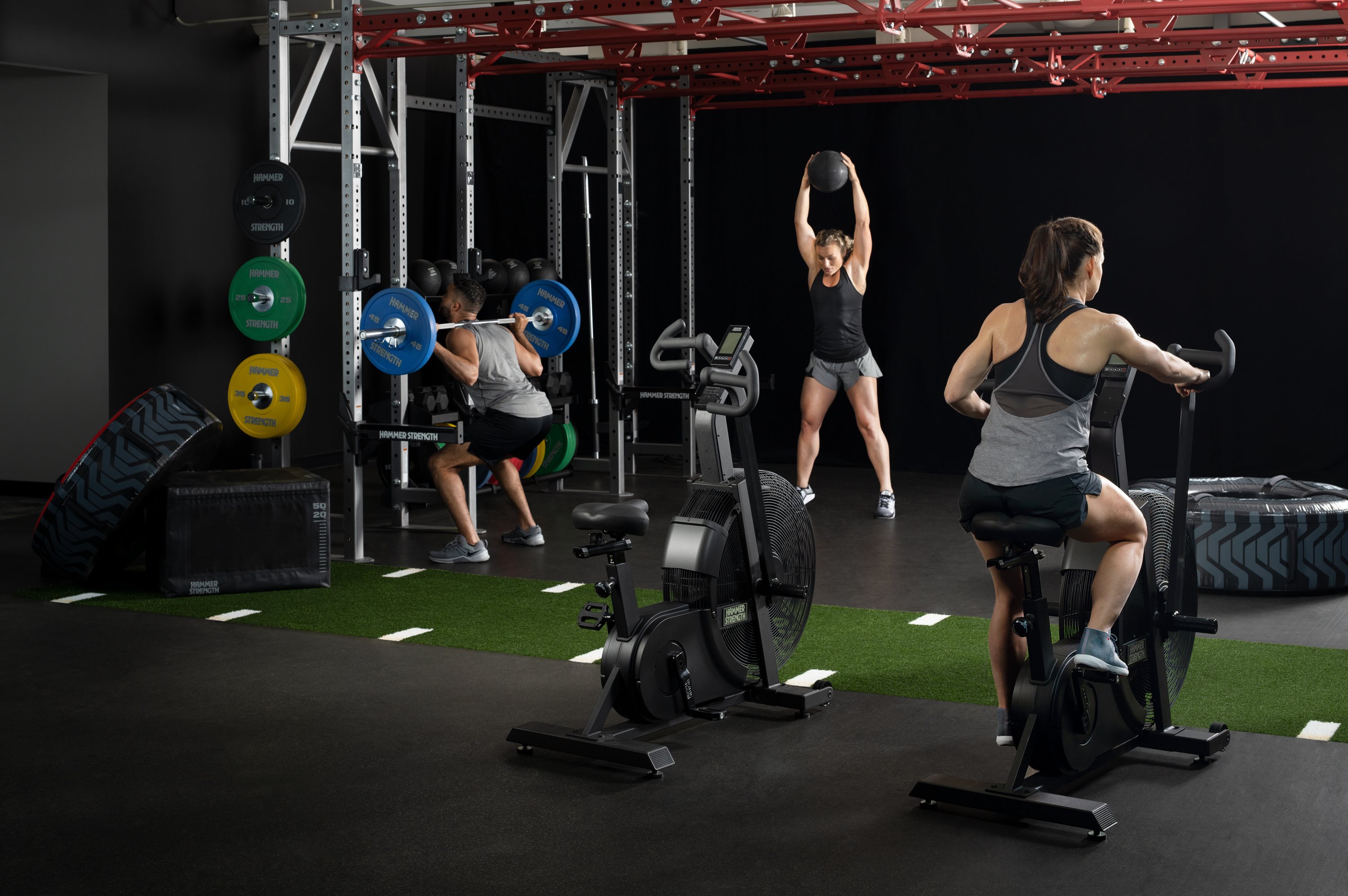Embracing Inclusivity in Fitness
The fitness industry is evolving rapidly, and at the center of this transformation is a critical shift toward inclusivity. At Life Fitness / Hammer Strength, we believe this movement goes beyond offering traditional workout options—it’s about designing spaces and programming that reflect the full spectrum of human diversity.
For facility managers and fitness leaders, embracing inclusivity is no longer just a social responsibility—it’s a strategic advantage. From accessibility compliance to programming innovation, creating a more inclusive environment can improve member retention, attract untapped markets, and future-proof your facility in an increasingly competitive landscape. This blog explores how facility managers and operators should approach inclusivity in fitness, from equipment recommendations to space design.
Why Inclusivity Is a Business Imperative
Historically, fitness spaces have focused on a narrow definition of health—often equating thinness with fitness and overlooking the needs of people with disabilities, aging populations, and those outside traditional body norms. Today, those gaps in service represent a major business opportunity.
- Over 1.3 billion people globally live with a disability, according to the World Health Organization.
- In the U.S., 60% of adults with mobility impairments do not engage in aerobic activity—not due to lack of interest, but because facilities often lack appropriate accommodations (CDC).
- Gen Z, a growing market force, expects inclusive, mental health–oriented, and culturally relevant wellness experiences (Forbes).
By meeting these unmet needs, you can tap into new revenue streams and differentiate yourself in a saturated market. That means investing in accessible equipment like low step-up treadmills and adjustable strength machines, designing quiet zones for neurodiverse users or those managing mental health, offering group classes geared toward older adults or beginners, and training staff in cultural competence and adaptive coaching. With the right mix of equipment, zones, and education, you don’t just check a box—you create a space where more people can belong, participate, and thrive.
Real-World Solutions: Programming and Equipment That Deliver
Forward-thinking clubs are already making impactful changes, and it’s time you join them. For example, The Claremont Club’s “Cycling for Parkinson’s” program was developed after identifying over 50,000 locals living with Parkinson’s disease. The initiative not only met a real community need but also fostered member loyalty and positive brand perception. Explore their story.
On the equipment side, inclusive product design is becoming a key driver of accessibility. Our upcoming inclusive cable machine—engineered to replicate functional movements and allow intuitive, one-handed adjustments—has received strong reception at trade shows like HFA and FIBO. It’s designed to serve users of all ages and abilities, and to meet compliance standards without sacrificing functionality or footprint.
Such investments not only increase accessibility but also send a clear message: your facility is built for everyone.
Industry Trends You Can’t Ignore
Inclusivity is not happening in a vacuum—it aligns with the most important trends shaping the fitness business today:
- Hybrid models that blend digital and in-person offerings allow users to engage on their own terms, especially important for those managing physical, social, or mental barriers to gym access.
- Wearables and AI-driven fitness make personalization scalable, allowing facilities to support a more diverse member base with tailored workouts.
- Functional fitness and mobility training are becoming core offerings for aging populations focused on longevity, not aesthetics.
According to Fortune Business Insights, the global fitness market is projected to exceed $434 billion by 2028, with inclusive tech and programming playing a critical role in that growth.
What Facility Managers Can Do Now
As a facility leader, you’re in a unique position to lead this change from the inside out, and it’s important to approach inclusive equipment and space design with a strategic, user-centered mindset. Here are key strategies you can implement today:
- Audit your space for ADA compliance and functional design. Accessibility should be built into your layout—not added as an afterthought.
- Invest in inclusive equipment that accommodates users across a wide range of mobility levels and body types.
- Train staff and instructors in trauma-informed coaching, disability etiquette, and inclusive language.
- Develop specialized programs for underrepresented groups—such as adaptive fitness classes, older adult mobility sessions, or neurodivergent-friendly training environments.
- Use data to identify community needs and build programs with measurable outcomes. Pro Tip: Explore our complimentary Digital Solutions for exclusive insights into your equipment usage.

Inclusivity is not just good ethics—it’s good business. It can improve member retention, expand your audience, and position your facility as a modern leader in health and wellness.
The Future Is Inclusive—and It’s Already Here
The fitness industry’s future will be shaped by facilities that embrace diversity—not only in who they serve but in how they operate. By prioritizing inclusive design, community engagement, and accessibility-focused innovation, you position your facility to thrive in a fast-changing market.
This is your opportunity to lead, not just follow. Partner with us today to explore a more inclusive future for your facility — because when fitness works for every body, everybody benefits.



